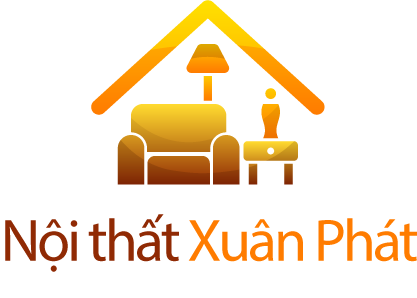Chưa có sản phẩm trong giỏ hàng.
Tin tức
How recognition can help lower turnover rate
Appropriate acknowledgment is a covert tool for decreasing employee attrition. Research indicates that workplace culture and employee experience are directly influenced by employee appreciation, which enhances retention. HR professionals also emphasize how well it affects financial results, productivity, and ROI, among other company outcomes.
But a lot of executives find it difficult to use staff appraisals to produce real results. In this tutorial, we will examine how effective recognition may reduce attrition and increase retention rates.
>>> Payroll Services For Businesses in Vietnam
The Role of Recognition and Rewards Programs in Employee Turnover
It is not surprising that one of the main causes of employee turnover is a lack of recognition and rewards. Research has regularly shown that employees are more likely to stay with their employer if they feel valued and appreciated, whereas employees who don’t feel valued are more likely to leave.
Consider putting the following tactics into practice to create a strong program for incentives and recognition:
Sincere and targeted praise has greater weight than generic remarks or awards. This is known as authentic and targeted recognition. Spend some time observing the skills that your staff members possess, praising them for their hard work, and expressing your sincere gratitude.
Though cash bonuses are a common option, creative ways to express gratitude can also be just as successful. To vary your approach to acknowledgment, look into possibilities like providing exclusive experiences, flexible work schedules, or more time off.
Create an Atmosphere of Recognition: Encourage an environment in the workplace where acknowledgment is intrinsic to the company. Encourage everyone on the team, from front-line workers to senior management, to publicly recognize and celebrate exceptional accomplishments. The benefit of acknowledgment on lowering turnover will be greater the more at ease recipients and givers feel.
The Correlation Between Recognition, Rewards, and Employee Productivity
The correlation between staff productivity and recognition and incentive initiatives is evident. Employees who believe their work is appreciated and acknowledged tend to be more productive than those who don’t. Furthermore, when workers consistently receive recognition and awards for their efforts, their engagement and job satisfaction grow.
Therefore, it’s critical to continue having recognition and incentives programs that are effective in order to increase staff productivity. By doing this, you can see a significant increase in workforce efficiency while also keeping your most important personnel on board.
How Often to Give Recognition
Let’s talk about when to acknowledge the work that your team has done. Is it better to do it annually, quarterly, or monthly?
It’s imperative that you give your team members vocal praise at least once a week since, in the absence of continuous acknowledgment, workers may begin to doubt their value to the company. “If no one seems to care, what’s the purpose of my efforts?” might be on their minds.
Like a dopamine rush, the good effects of acknowledgment wear off really soon. Praise must be given consistently in order to create a positive feedback loop.
It won’t do to simply give your team members a pat on the back once a year. Weekly feedback and appreciation are essential for sustaining engagement and productivity.
Four Awesome Methods for Employee Recognition
1. Implementing Peer Recognition
The people that your employees spend the most time with are their colleagues. Peer acknowledgment feels more authentic than recognition from you, the manager, because they are familiar with the nuances of the job.
“How can I introduce peer recognition?” may be on your mind. Exist any resources to help with this process?”
The good news is that there are lots of technological choices available, ranging from feature-rich recognition apps to specialized Slack communities like #kudos. Hi5, a solution that enables colleagues to recognize one another in real time, is one to take into account. Your staff members can virtually “high five” their coworkers by sending them GIFs or pictures at the end of the workday. Everyone gets one or more “high fives” in exchange. Really nice, huh?
Peer-to-peer recognition is only one component of a larger employee recognition program, it’s crucial to remember that. Let’s explore how you may effectively identify your team members.
>>> Top job Front-end developers in Vietnam
2. Align Recognition with Effort
Imagine the following: Raj, who worked late on a Friday to finish a project that needed to be finished on time; and Tattiana, who came up with an innovative solution that might ultimately save your organization a significant amount of money. Bravo to you both!
Is it time for Raj and Tattiana to get the same recognition, maybe in the shape of a Starbucks coffee card? Not likely.
Acknowledgment ought to match the work put in. For this reason, it’s critical to set precise rules for your efforts to be recognized. It’s important to distinguish between something as small as a Starbucks card and something larger, like a couple more days off.
If team members’ acknowledgment isn’t customized to their contributions, they may feel underappreciated and devalued, which may lead them to look into other job options.
3. Tailor Your Appreciation
Consider this: some people love coffee, while others get great pleasure from going to the movies.
Now, what happens if you give someone who is passionate about movies a Starbucks coffee card as a thank-you gift? Despite the gesture’s good intentions, some can interpret it as being a little careless.
This serves as a reminder that the concept of recognition is not universally applicable. Individuals differ in their interests and inclinations. It’s critical for leaders to recognize their team members’ accomplishments with something that truly speaks to them.
Pro tip: Giving employees a choice in their recognition gift is a terrific way to show appreciation for their constant above and above performance. Outstanding initiatives such as BlueBoard give staff members the freedom to choose experiences that suit their personal interests.
4. Prioritize Timely Recognition
Imagine coming back from vacation to discover that your teammate Linh is doing exceptionally well on group assignments and marketing assessments. Expressing gratitude and admiration promptly helps to increase Linh’s motivation.
On the other hand, a delayed identification could cause sentiments of abandonment and hinder subsequent attempts. Acknowledge quickly in order to motivate continuous excellence. Effective recognition programs help reduce high employee turnover by improving engagement, morale, and workplace culture.
Contact
Aniday was born to help businesses take advantage of a network of experts/headhunts to find and attract talents.
- Website: https://aniday.com/




